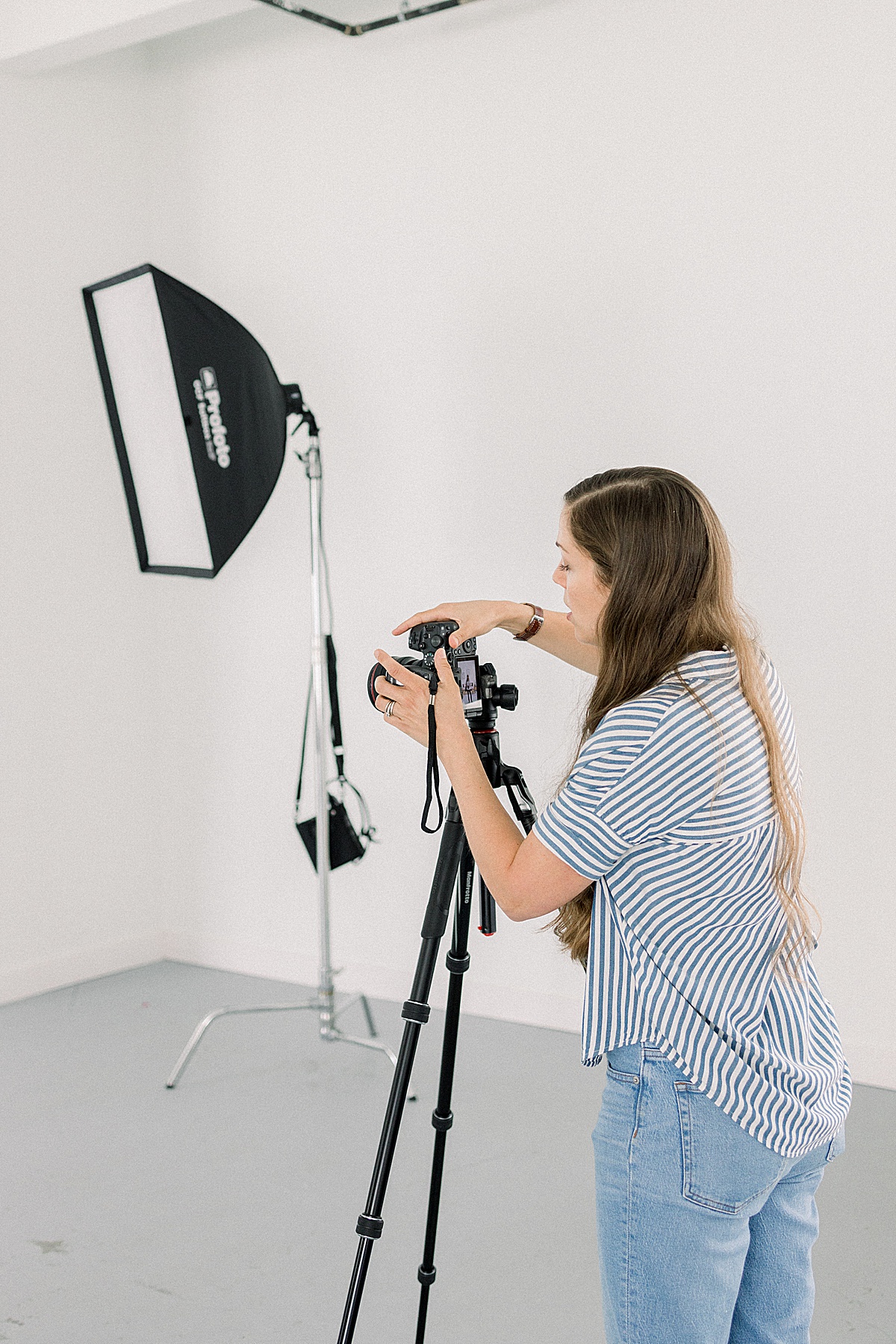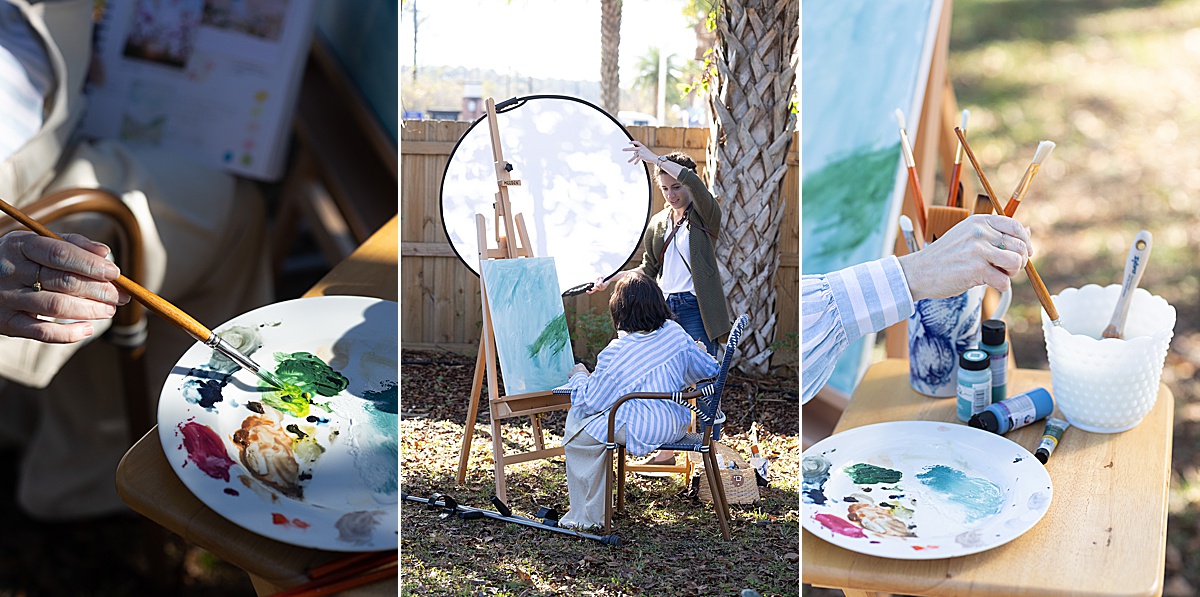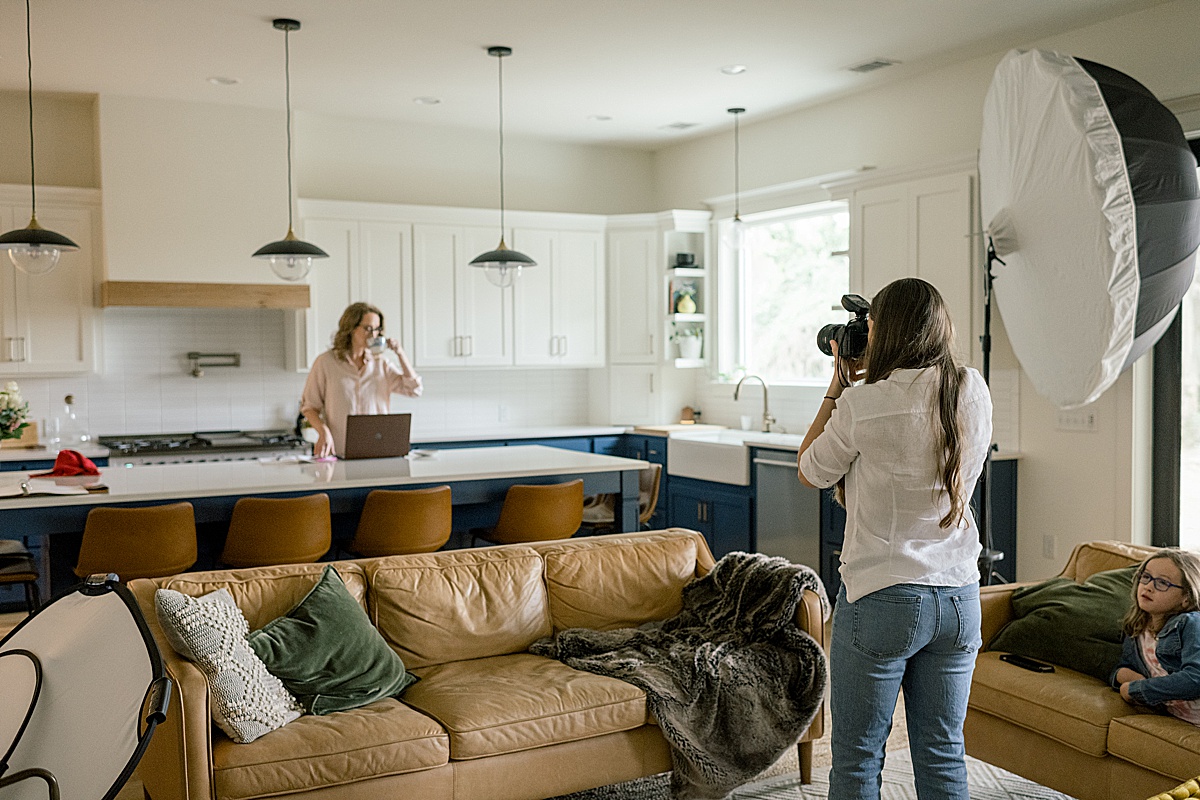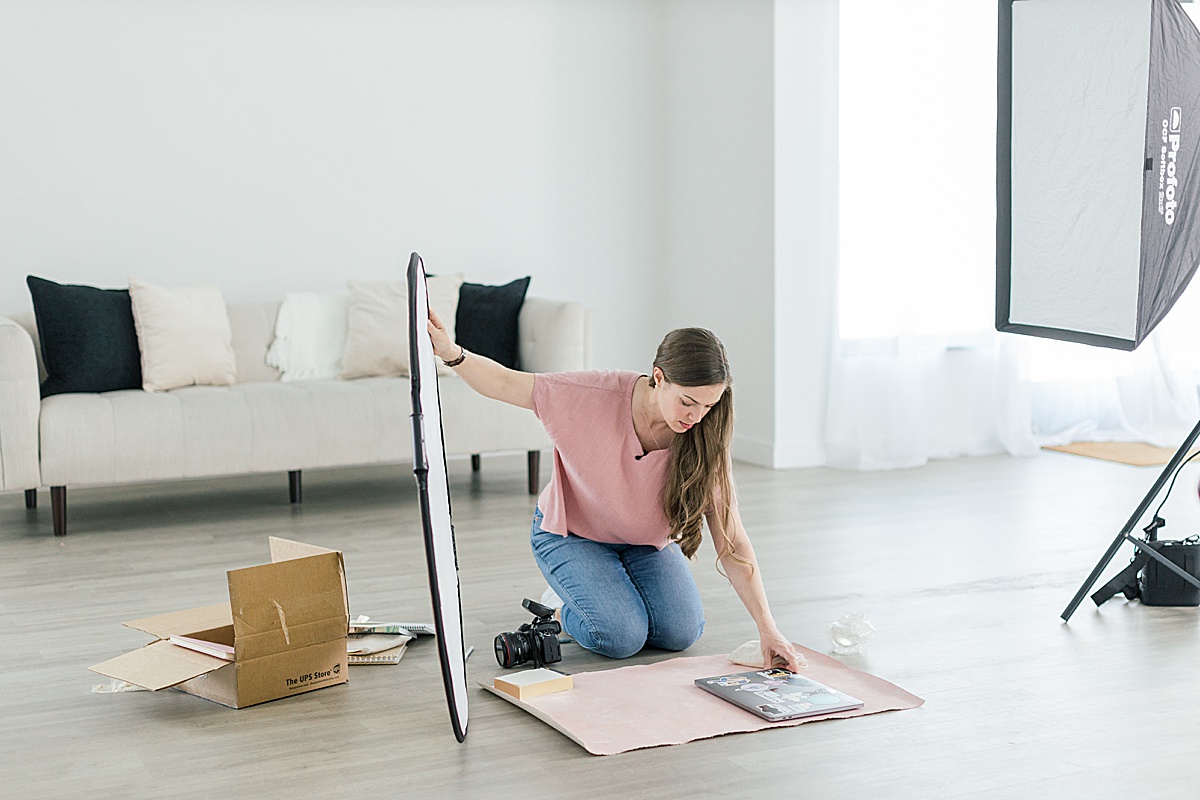Why is that Lightning seems to really scare us photographers?
I am 100% guilty of this- I used to call myself a natural light photographer because it gave me permission to ignore the need to learn off-camera flash (OCF), but eventually, it caught up with me. I’m still trying to get my finger right Why it freaks me out, though- I think I’m intimidated by the possibility of adding elements math and science to an art form. Having mastered natural light for quite a while, thoughts on adding another light source? No, thank you.
When I transitioned from weddings to branding, I realized I could no longer cling to those old excuses. I’ve learned how to use basic OCF for a wedding reception, but anything more complicated than dance floor lighting, and I’m beyond my grasp. But branding and weddings are very different in many ways, and one of those differences is that secondary light for your set.

With a brand session, you may find yourself shooting in a space where the natural light isn’t amazing, but since this is a client’s office, you need to make it work. You can’t always move to better light with your brand-set sessions take precedence, and you should be able to adjust your light to keep up.
Because if that hasn’t happened to you yet, there will soon come a time when you arrive on set for a branding session and wonder “where is all the natural light I rely on??”
And when it does, you’ll be glad to have these essentials in your camera bag!
These days, I take OCF with me every shot. That doesn’t mean I USE it all the time, but I have it, and I know How to use it to make almost every corner of a room work to my advantage instead of being limited only Pre-existing “perfect pockets” of natural light. Check this shot and this shot to see some examples of work I’ve shot with the OCF!
Here’s a list of lighting equipment that *every* brand photographer should have in their bag for every shoot (even if you don’t think you need it!):
5-in-1 reflector
This is the cheapest lighting equipment you will ever buy, and it will also be one of the equipment you use the most. I’d be lost without mine! The cover inside the zip-off reflector surface is like a portable cloud, and VERY useful when you have hot spots of sunlight on set and need to soften them without moving your client!

Translucent umbrella
The bigger the light source, the softer the even burst of light a small a white umbrella over a speedlight will make a huge difference in the quality of your OCF! Want a softer light? Get a bigger umbrella :). The smallest size I recommend starting with is 43″, which you can find at almost any local camera store. Check out Westcott’s umbrella – they’re inexpensive, which means if you definitely break one, it won’t break the bank either.
Reflective umbrella + diffuser
This will give you even sseen more often than a see-through umbrella, and you can use these settings to emulate a softbox if you don’t have one/don’t want to buy one yet. You just need to understand that your light will spread a bit more than with a true softbox, which means you have quite a bit of control over which parts of the photo your light will affect. You can buy reflective umbrellas in white or silver – white is my favorite, but silver has the advantage of adding a bit of contrast if that’s something you’re looking for!

OR
Softbox
models between 2′-3′ will set you up nicely! If you feel the need to use OCF regularly, just use a softbox instead of an umbrella + diffuser. The extra controls are useful, AND you will lose less power as the softbox allows the flash to point directly at the subject, instead of directing the light away from the client towards the umbrella- the farther your light has to travel, the more power & intensity it will lose, so if you shooting with a smaller speedlight or a less powerful strobe, I would probably choose a softbox over an umbrella + diffuser setup.

Psst- want to learn more about lighting so you can produce stunning results every time, regardless of the location or forecast? Check out my new course, Lighting The Brand Session!
Photo 1 & 4 by Alisandra Photography, photo 2 by Kate Taramykin.
